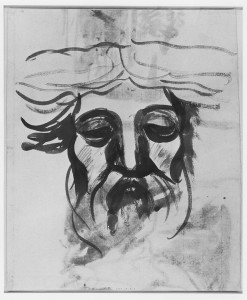
The shipwreck in Act I, Scene 1, after George Romney. Engraved by Benjamin Smith
In 1790, George Romney received a commission to paint the first act of The Tempest. Although the finished painting has apparently not survived, a 1797 engraved copy of the work by Benjamin Smith as well as multiple preparatory studies of the work are readily available on the Internet.One of the most notable things about this painting is Romney’s compression of the scene to include in the painting both Prospero and Miranda on the shoreline as well as the ship. This representation is completely unrealistic—there’s no way the ship could be that close to the shore! The ship is laughably small given the number of people on it.
This compositional decision, however, actually mirrors the structural decisions that Shakespeare himself makes in adhering The Tempest to the three classical unities. The Tempest follows the unities of time, place, and action. This is notable mostly because Shakespeare rarely uses classical unity in his plays, which focus more on psychological development through language rather than the mimesis of action that Aristotle saw as essential to theatre. All the action takes place on an “uninhabited island,” everything has to do with Prospero’s plan to set Miranda up, and, as Alonso reveals in act 5, the entire action of the play occurs in the span of about 3 hours:
“Give us particulars of thy preservation; 2175
How thou hast met us here, who three hours since
Were wreck’d upon this shore” (5.1.2175-7)
Clearly, Romney is not the only one using poetic license to create a compelling artistic structure.
Another aspect of Romney’s painting that merits attention is its value structure—its composition of lights and darks. In Romney’s color study, the lighting is generally naturalistic.
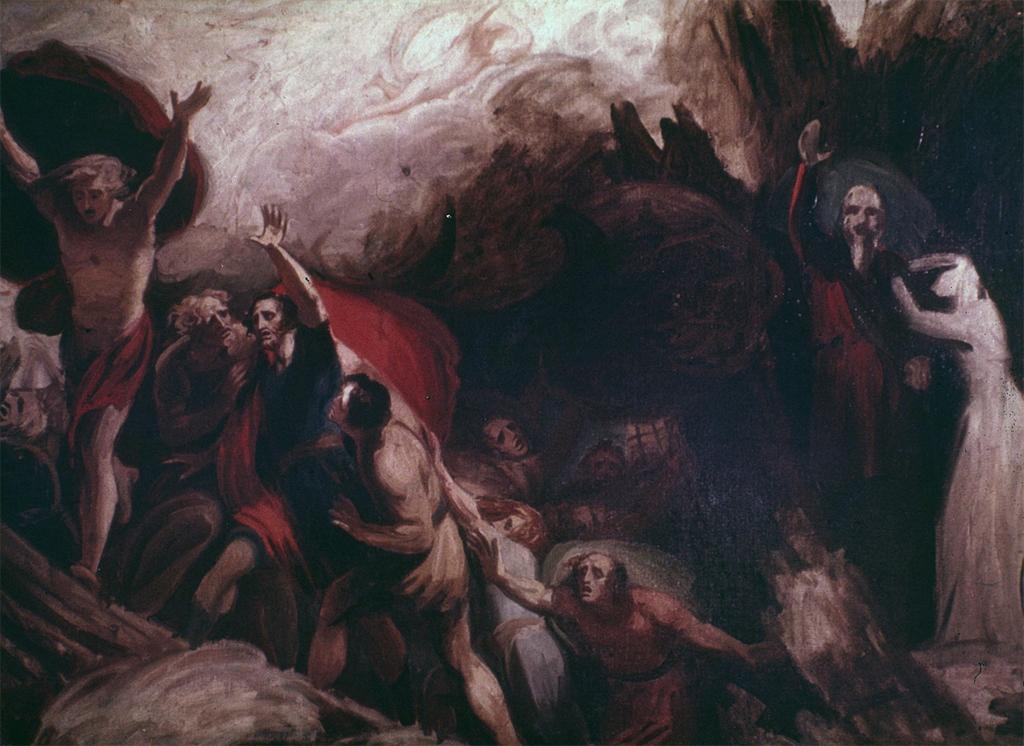
Shipwreck Scene from The Tempest, oil
There seems to be one light source, the cloud of spirits in the background. Romney disregards the fact that these spirits are invisible and unmentioned by the passengers during Act 1, instead making them the source of light that everyone on board seems to look up at.
In the final version of the painting (shown above in the engraved copy), however, Romney adds a second light source to light the front of the painting more emphatically. Romney most likely made this change in order to better display the facial expressions of Prospero and Miranda. That both of these characters watch this new light source rather than the cloud in the background that everyone else stares at, however, leaves the viewer to ponder what that alternative light source could be.
The last thing I’d like to point out is the relationship between Prospero and Miranda, and Ferdinand, who can be seen on the left-hand side, jumping off the ship by himself. In the preparatory studies, Romney has Ferdinand higher in the compositional plane than Prospero and Miranda. Romney must have seen this as an error, as he elevates Prospero and lowers Ferdinand in the final version. I find this decision narratively ‘correct’ but visually damaging.
Narratively, elevating Prospero makes sense because it gives the viewer as sense that he and Miranda are safe from the effects of the Tempest on the sea and emphasizes both Prospero’s hierarchal position and closeness to the spirits that he commands. The new composition, however, is much less visually compelling. In the oil color study, there is a nice spiral line of movement from Ferdinand, through the bodies of the other passengers, up through Prospero, and then back into the middle of the painting:
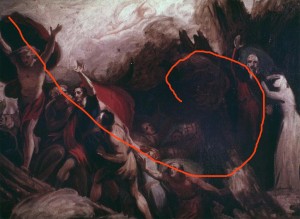
The final composition is not nearly as unified, lacking a similar line that connects the ship to the figures on the shore. This makes the unrealistic distance between Prospero and Miranda and the ship much more apparent and makes it seem like Prospero and Miranda are in a separate painting.
Below, some more images of preparatory studies for this commission:
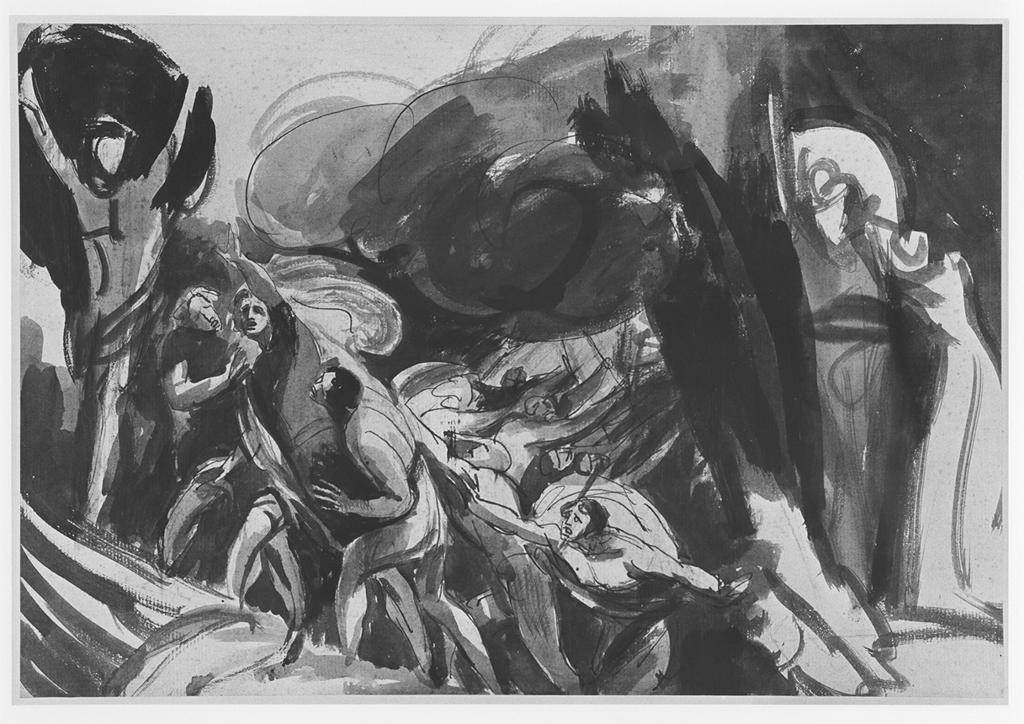
ink drawing on paper

A Study of Miranda for “The Tempest”
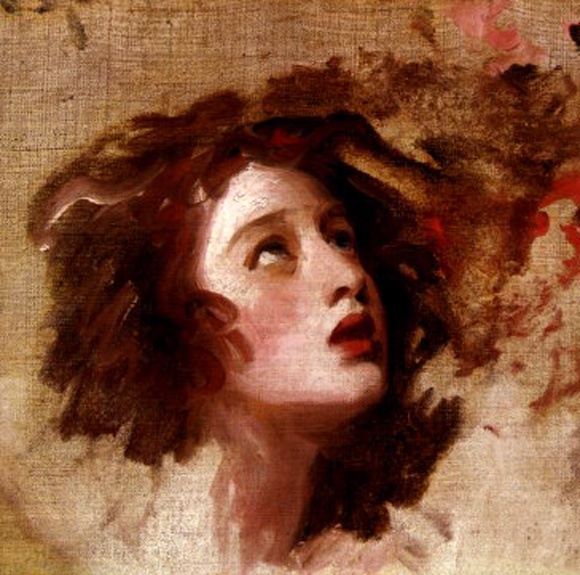
Emma Hart as Miranda (1785-86)

Aerial Group
Works Cited
Shakespeare, William. The Tempest. The Complete Pelican Shakespeare. Ed. Stephen Orgel and A.R. Braunmuller. London: Penguin Books, 2002. 736-761. Print.

